
Caravaggism: The Struggle of Light and Darkness
Caravaggism is a style in painting from the late 16th to early 17th centuries that combines the strength of realism and the dramatics of Baroque. It is easily recognizable due to its expressive color contrasts, masterful tenebrism, and bold use of red-black dominants.
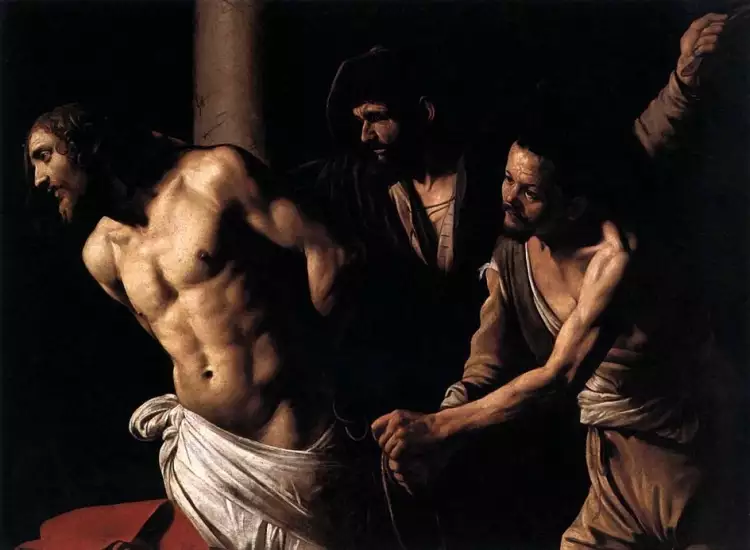 Caravaggism. Caravaggio. Christ at the Column, 1606-1607
Caravaggism. Caravaggio. Christ at the Column, 1606-1607
Caravaggism achieved relatively limited diffusion but had a significant influence on the history of painting. It developed in Italy during the late 16th to early 17th centuries, touching Spain and the Netherlands. While there might not have been many Caravaggist artists—just a handful of significant names—Caravaggio himself, the founder of this movement, became a precursor of realism.
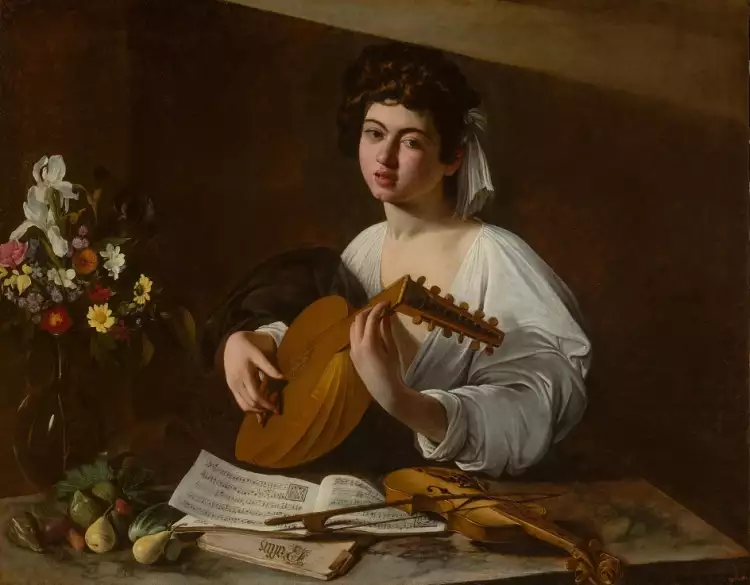 Caravaggism. Caravaggio. The Lute Player, 1595
Caravaggism. Caravaggio. The Lute Player, 1595
The stylistic influence of his talent is keenly felt in many Baroque canvases. Moreover, the works of Rembrandt, Rubens, and Velázquez would have been very different without Caravaggism, as they experienced the powerful impact of this style.
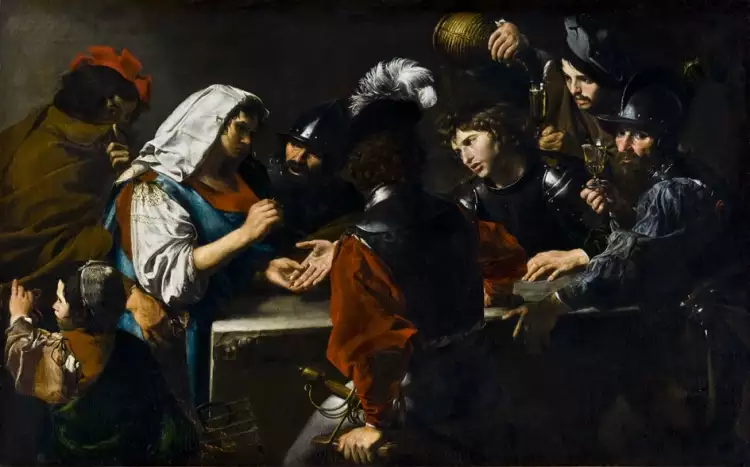 Caravaggism. Valantin de Boulogne. Fortune-teller, circa 1620
Caravaggism. Valantin de Boulogne. Fortune-teller, circa 1620
Passionate and Tragic
Caravaggism is a child of the Baroque era. In the second half of the 16th century, a crisis of Renaissance ideals became evident. Painters began seeking alternative artistic paths that reflected the characteristics of the Counter-Reformation era and religious conflicts. The world ceased to seem harmonious. Heightened, passionate emotionalism infiltrated art, leading to a sense of tragedy, pain, and affectation.
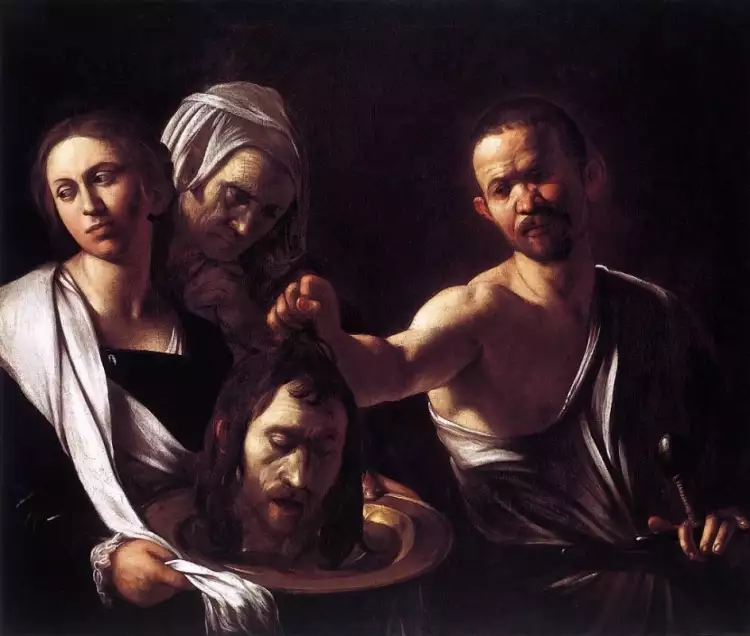 Caravaggism. Caravaggio. Salome with the head of John the Baptist, circa 1607-1610
Caravaggism. Caravaggio. Salome with the head of John the Baptist, circa 1607-1610
This feeling of tension and unease, the sense of human loneliness in a hostile world, is vividly expressed in the paintings of Caravaggists. Dark palettes, black backgrounds, and blood-red accents are often used in their works.
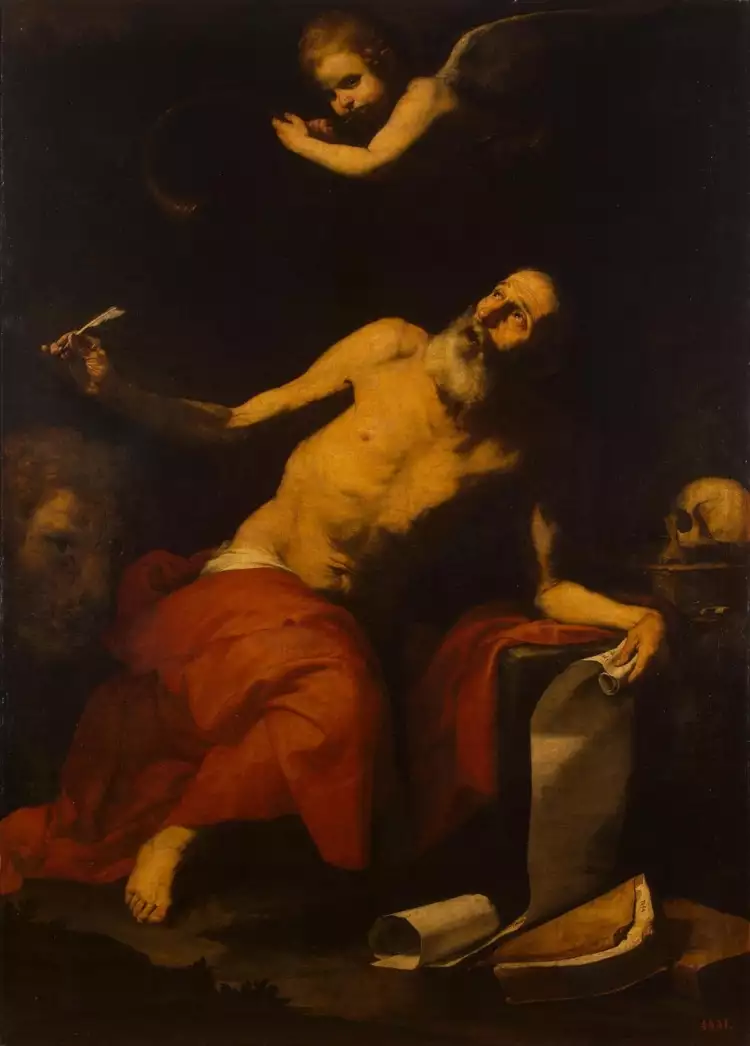 Caravaggism. José de Ribera. St Jerome and an angel, 1626
Caravaggism. José de Ribera. St Jerome and an angel, 1626
Tenebrism
Tenebrism (the technique of modeling volumes through light) gained significant importance. Caravaggio began using chiaroscuro technique, giving figures volume through the gradation of light and dark. Thus, in the canvases of Caravaggist artists, light and darkness perpetually engage in a struggle.
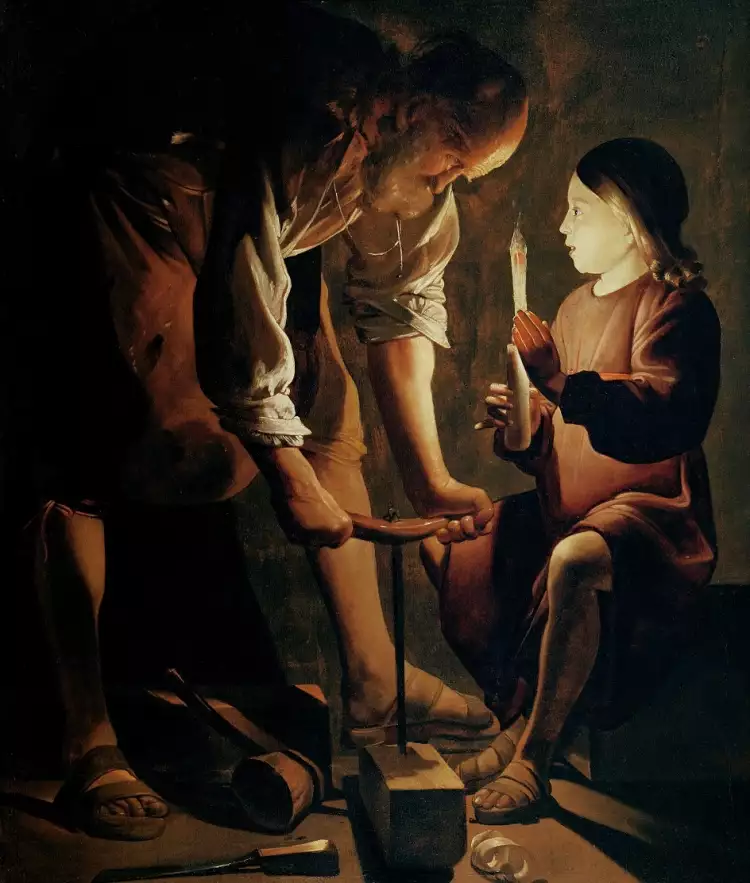 Caravaggism. Georges de La Tour. St Joseph, 1642
Caravaggism. Georges de La Tour. St Joseph, 1642
However, Caravaggist masters lack the extravagant opulence characteristic of Baroque works. They were realists in their portrayal of reality. The use of light and shadow allowed for depth in the depiction and enhanced a "holographic" effect.
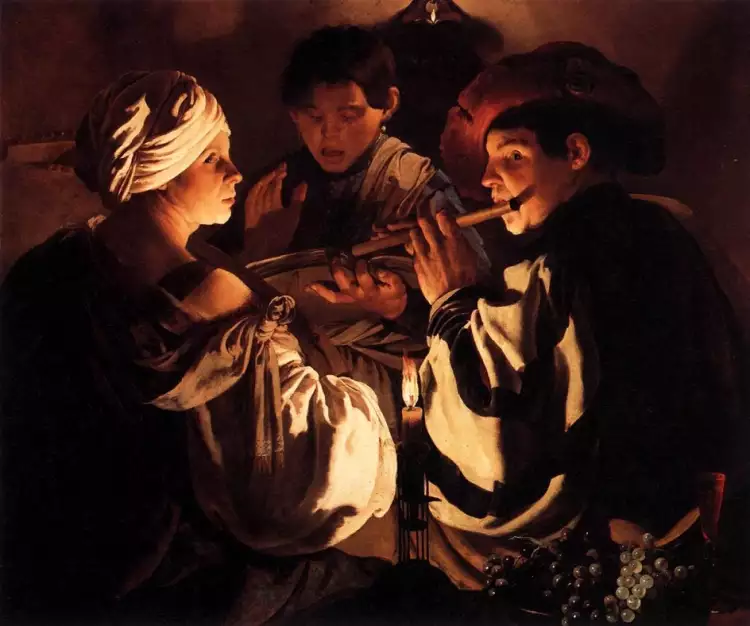 Caravaggism. Terbruggen Hendrik. Concerto, circa 1626
Caravaggism. Terbruggen Hendrik. Concerto, circa 1626
This is where the uniqueness of the style lies, making the paintings of Caravaggist artists stand out sharply amidst the works of their contemporaries. Caravaggism is characterized by realism imbued with Baroque moods.
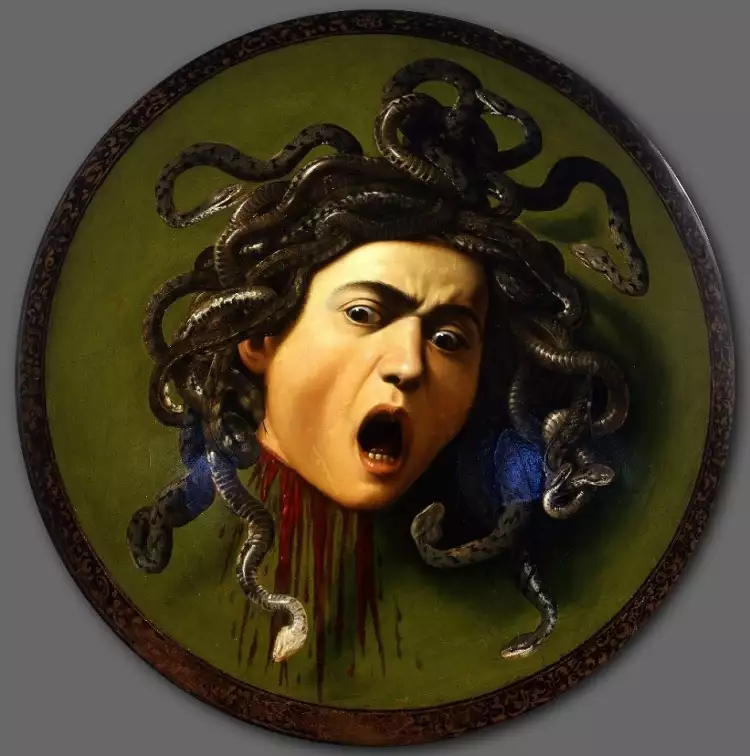 Caravaggism. Caravaggio. Medusa, circa 1597
Caravaggism. Caravaggio. Medusa, circa 1597
Key Figures of Caravaggism
The founder of the style was Michelangelo Merisi da Caravaggio. His life was challenging, his character complex. He often ended up in prison, was a brawler, and a rough individual. This is why Caravaggio's biography became the basis for the eponymous film released in 1986.
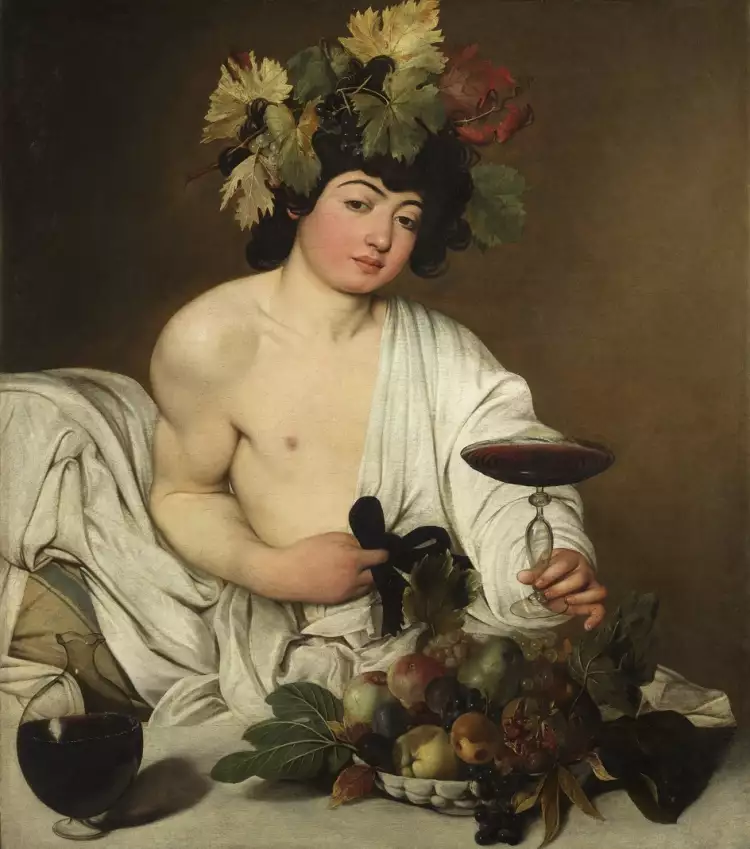 Caravaggism. Caravaggio. Bacchus, 1598
Caravaggism. Caravaggio. Bacchus, 1598
In art as well, the artist turned out to be a "rough" character: instead of painting refined works in the manner of elegant Mannerism like his contemporaries, he created his own strong, realistic, and at times "low" style (many considered his genre scenes to be "low"). It was an honest view of life around him.
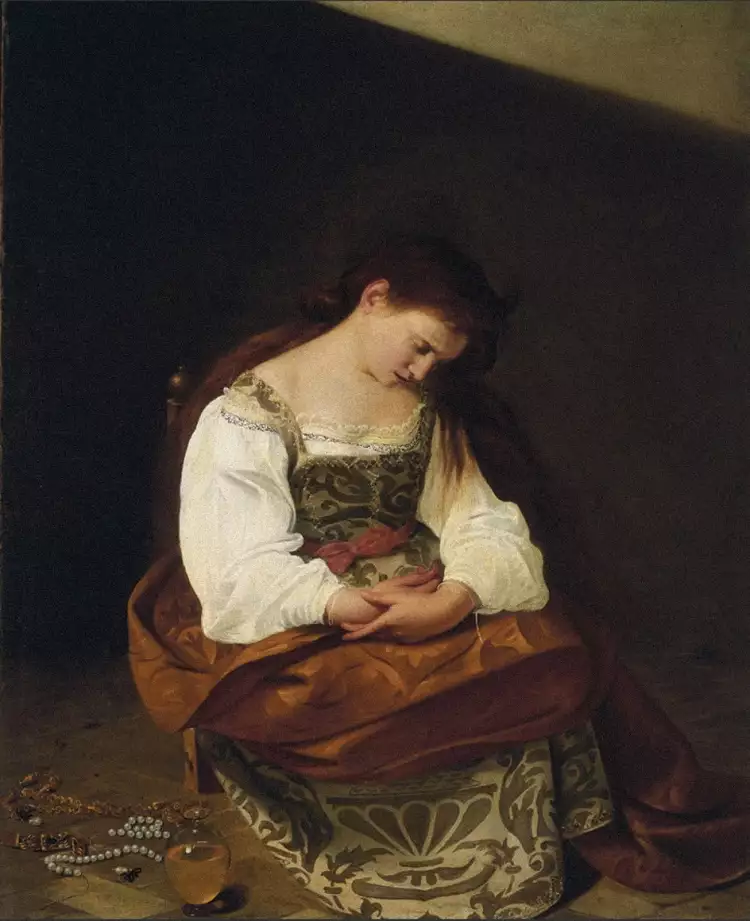 Caravaggism. Caravaggio. Penitent Magdalene, 1594-1596
Caravaggism. Caravaggio. Penitent Magdalene, 1594-1596
Caravaggio became famous for his paintings with religious themes. His name became immortalized by the masterpiece "The Entombment of Christ," exceptional in its emotional intensity.
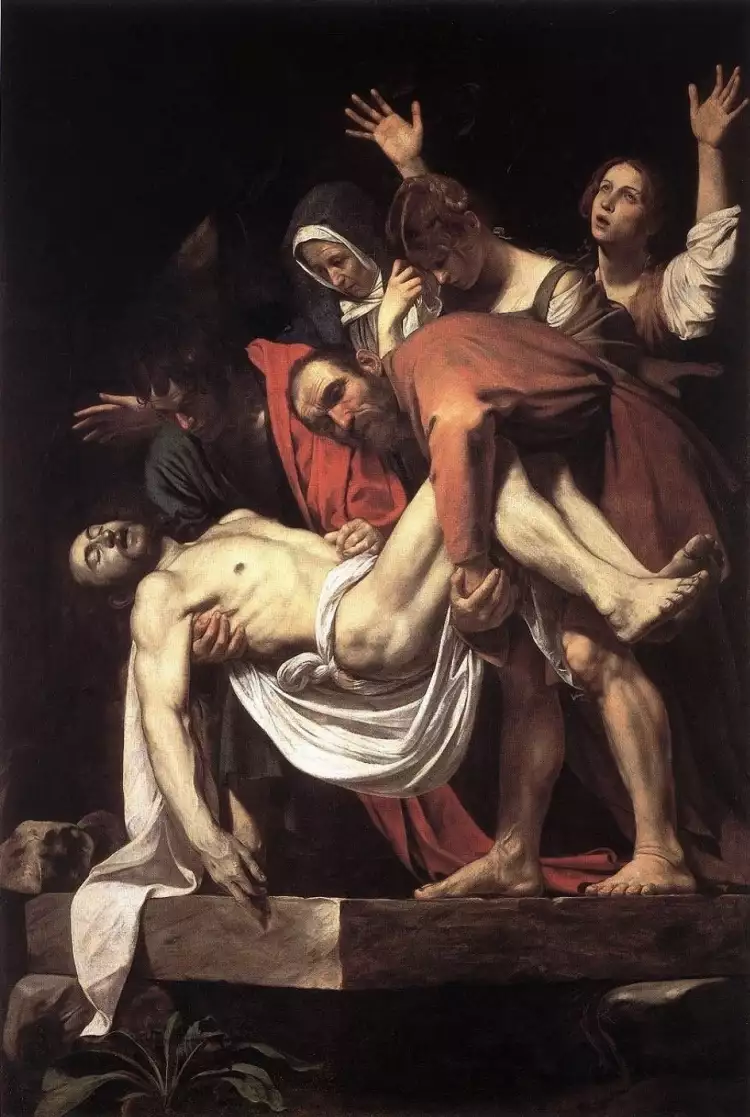 Caravaggism. Caravaggio. The Entombment of Christ, 1603
Caravaggism. Caravaggio. The Entombment of Christ, 1603
But even in the genre of everyday life, he created magnificent works, such as "The Fortune Teller."
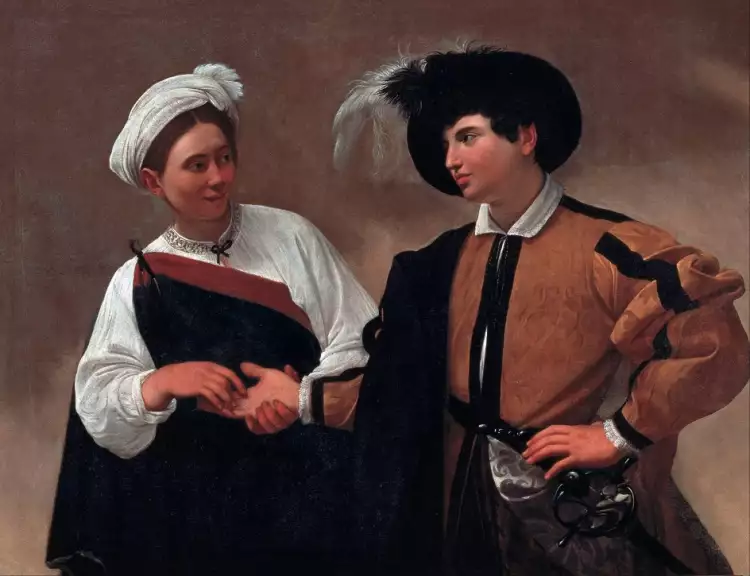 Caravaggism. Caravaggio. Fortune-teller, 1594
Caravaggism. Caravaggio. Fortune-teller, 1594
Additionally, Caravaggio painted the first still life in the history of Italian painting, "Basket of Fruit."
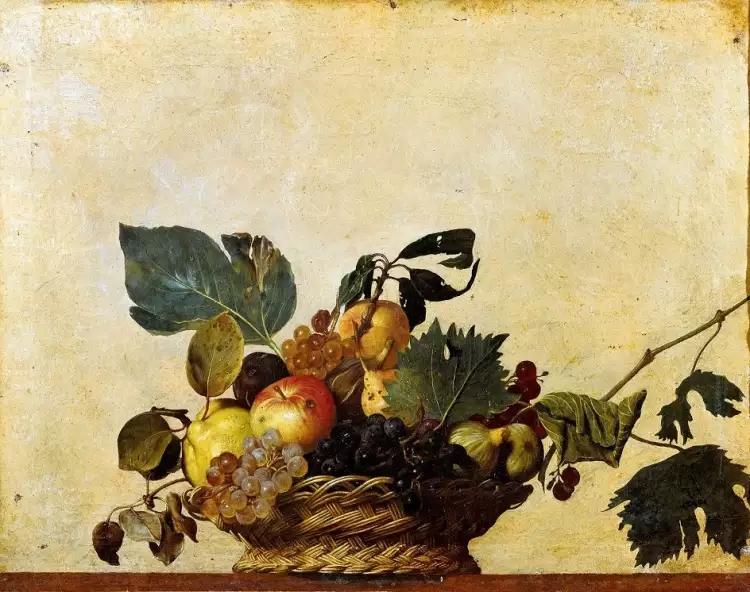 Caravaggism. Caravaggio. Basket of Fruit, 1596
Caravaggism. Caravaggio. Basket of Fruit, 1596
Other notable representatives of Caravaggism:
- Italians Orazio Gentileschi, Artemisia Gentileschi, and Mario Nuzzi, also known as De Fiori.
- Dutch artists Dirck (Theodor) van Baburen and Hendrick Terbrugghen - the so-called "Utrecht Caravaggists."
- French painters Valentin de Boulogne and Georges de La Tour.
- The Spanish artist José de Ribera, nicknamed Lo Spagnoletto.
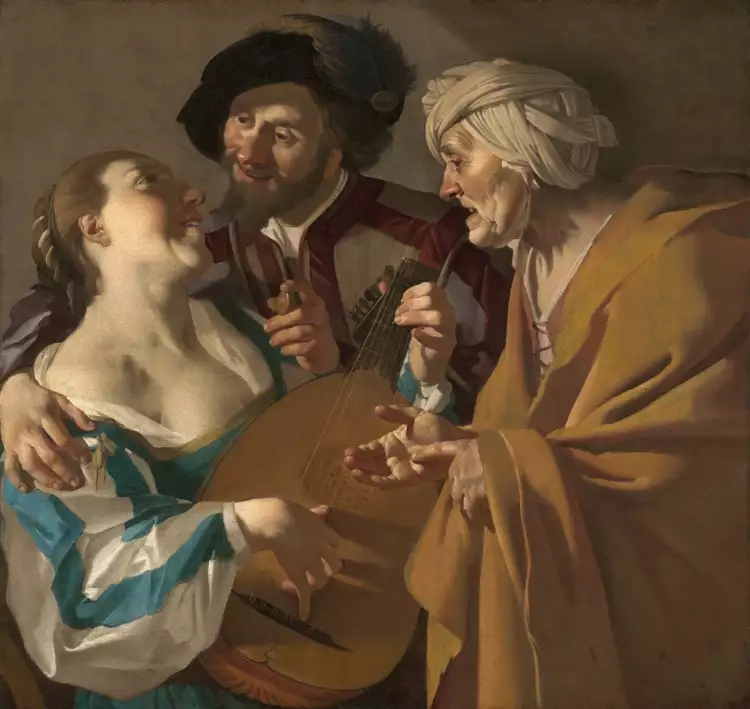 Caravaggism. Dirk Van Baburen. The Procuress, 1622
Caravaggism. Dirk Van Baburen. The Procuress, 1622
As we can see, Caravaggism became an international phenomenon. In this style, well-known masters of the 17th century, such as Peter Paul Rubens, Diego Velázquez, and Rembrandt, worked for a period.
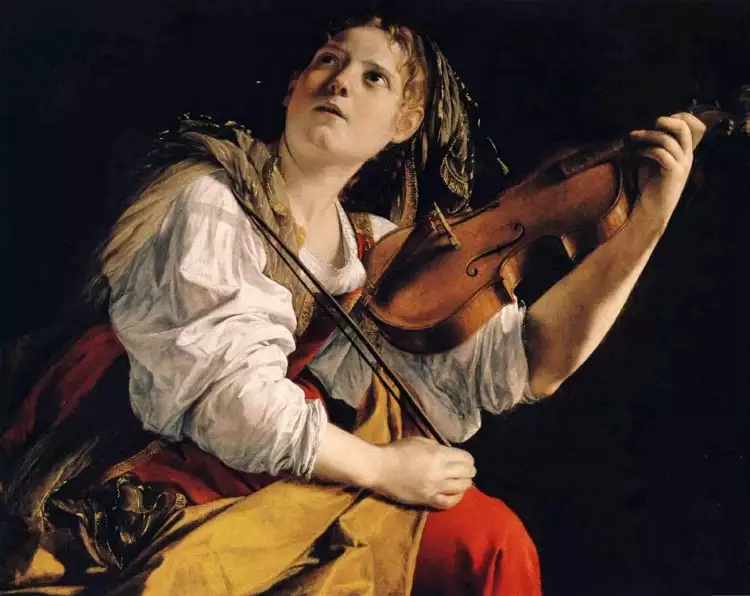 Caravaggism. Orazio Gentileschi. A young woman playing the violin, 1621-1624
Caravaggism. Orazio Gentileschi. A young woman playing the violin, 1621-1624
Echoes of Caravaggism were felt in the works of many Baroque artists and later among representatives of Academic art.
With each passing year, paintings by old masters become more valuable. Many of these artworks are presented at VeryImportantLot. The cost of old master paintings at auctions starts from a few thousand euros, but, of course, the more significant the artist's name, the more zeroes are added to the price, and the stronger the competition.
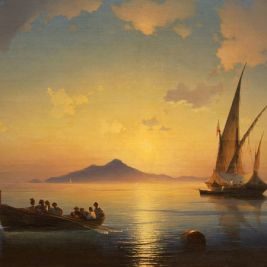 The painting "Bay of Naples" by Ivan Konstantinovich Aivazovsky is an invitation to immerse yourself in the serene beauty of a southern evening
The painting "Bay of Naples" by Ivan Konstantinovich Aivazovsky is an invitation to immerse yourself in the serene beauty of a southern evening 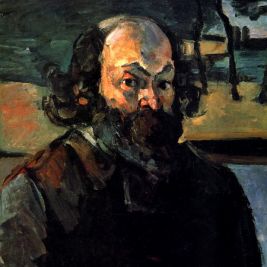 Paul Cézanne: Biography, Artistic Career, and the Artist's Masterpieces
Paul Cézanne: Biography, Artistic Career, and the Artist's Masterpieces  Sculpture is the unique art of creating three-dimensional artistic works
Sculpture is the unique art of creating three-dimensional artistic works 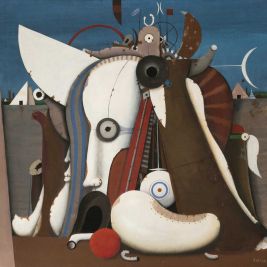 Experience the Grandeur at Wettmann Auktionshaus an der Ruhr's Art and Antique Auction
Experience the Grandeur at Wettmann Auktionshaus an der Ruhr's Art and Antique Auction 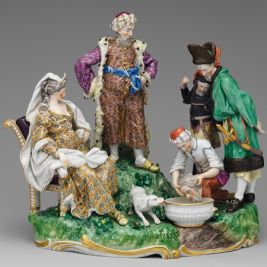 Frankenthal Porcelain: a rarity worthy of museum collections
Frankenthal Porcelain: a rarity worthy of museum collections 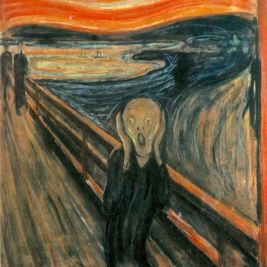 The painting "The Scream" by Edvard Munch is a terrifying prophetic symbol of the 20th century
The painting "The Scream" by Edvard Munch is a terrifying prophetic symbol of the 20th century 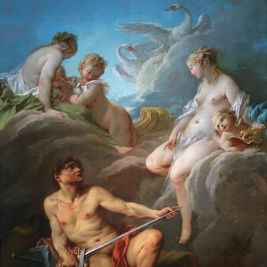 Mythological genre is the captivating world of ancient myths and legends
Mythological genre is the captivating world of ancient myths and legends 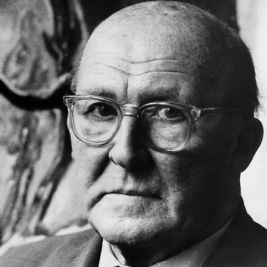 An entangled world Willi Geiger
An entangled world Willi Geiger 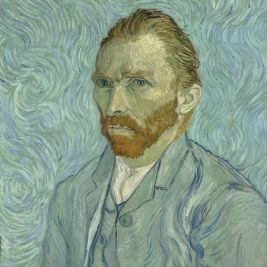 Vincent van Gogh is the most iconic artist of Post-Impressionism
Vincent van Gogh is the most iconic artist of Post-Impressionism  Top 10 Most Famous Architects - The Greatest Master Builders in Human History
Top 10 Most Famous Architects - The Greatest Master Builders in Human History